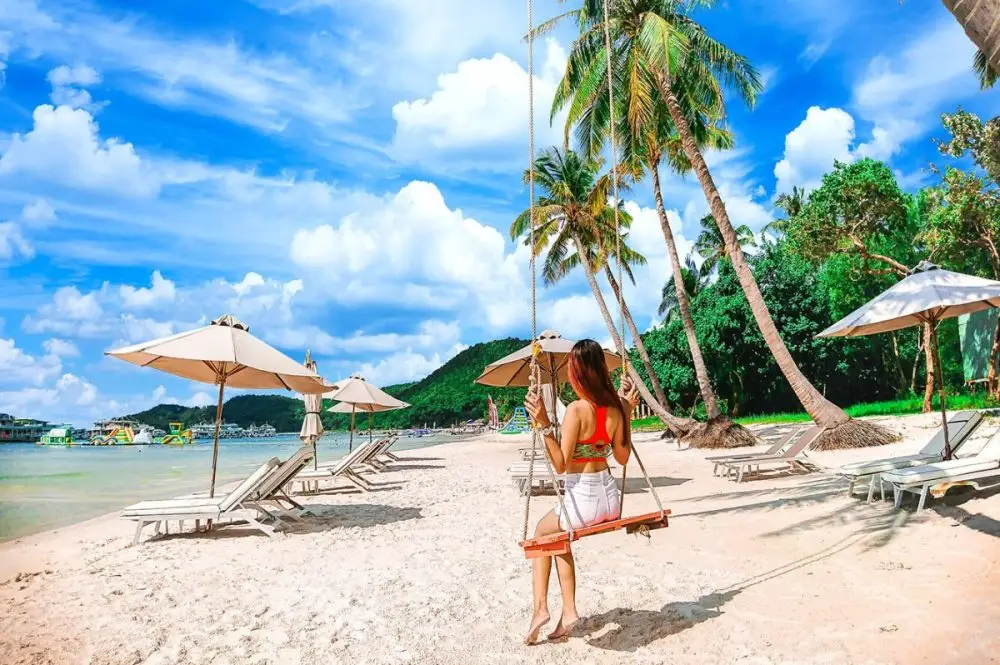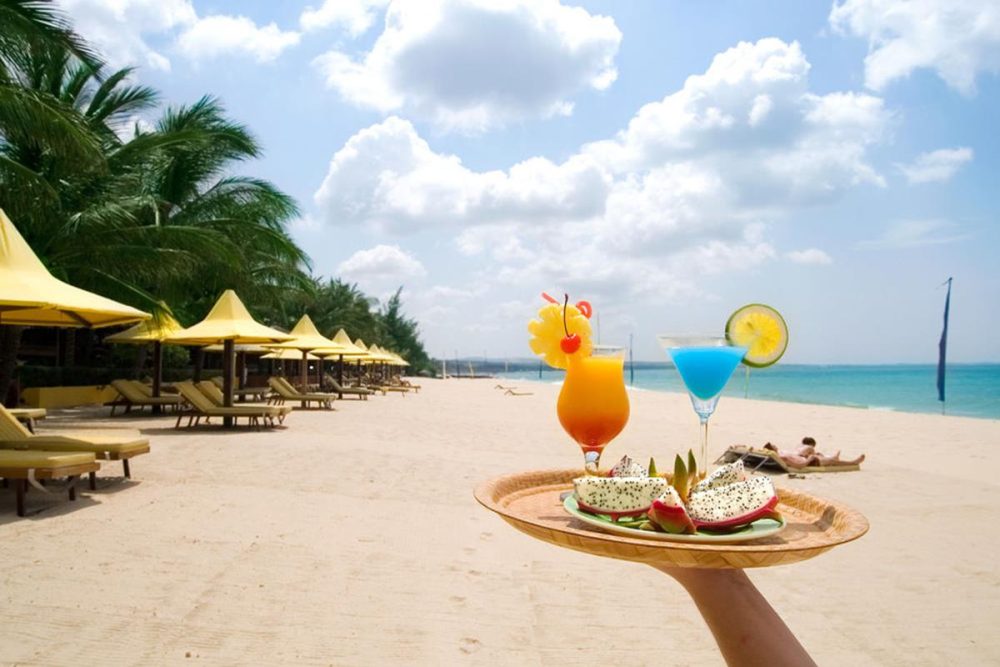In the country of elongated shape, the weather varies in each region. Temperature fluctuations, monsoon changes, and sharp contrasts between the north, center, and south create unique conditions in each month. The best time to vacation in Vietnam varies depending on the direction and purpose of the trip. The same month can offer sunshine in Nha Trang, prolonged downpours in Da Nang, and coolness in Hanoi.
When planning a vacation, it is important to consider not only the weather by month but also the amount of rainfall, humidity, water temperature, and the number of rainy days in different parts of the country. Ignoring seasonal features can result in a ruined beach vacation, spoiled landscapes, and complex logistics between regions.

When to vacation in southern Vietnam: stable summer
Southern Vietnam offers comfortable conditions almost year-round. Ho Chi Minh City, Phu Quoc, Phan Thiet, and Mui Ne fall into a tropical climate zone with moderate humidity and mild temperature variations. The best time to vacation in Vietnam here is in summer rather than winter months: from December to April. During this period, the sun is stable, rainfall is minimal, and the temperature ranges from +28…+32 °C.
The beach season opens here during the Christmas and New Year holidays: calm sea, clean air, greenery, and predictable climate create ideal conditions for relaxation. In May, the rainy season begins, lasting until October. Precipitation falls in the form of short tropical showers in the evening or at night, allowing for swimming and strolling during the day.
Central Vietnam: instability with a short window for vacation
A region with a changeable climate. Da Nang, Hoi An, and Hue often fall under the influence of typhoons in September and October. Nevertheless, the best time to vacation in Vietnam in the central part is from February to May. During this time, there is minimal risk of rain, moderate humidity, and air temperatures within +26…+30 °C.
The climate in the center is characterized by more abrupt transitions between seasons. June brings heat, humidity sharply increases, and in August-September, typhoons often hit the coast. From November to January, overcast weather is common, with an increased number of rainy days and a significant drop in temperature to +18…+20 °C.
Northern Vietnam: seasonal changes like in Europe
The north is characterized by distinct seasonal divisions. Hanoi and Haiphong experience a cool winter (December — February) with temperatures ranging from +14 °C at night to +22 °C during the day. This period, when it’s best to travel to Vietnam for walks, excursions, and comfortable movement — without heat but also without beach relaxation.
The summer months (June — August) are hot and humid: up to +35 °C during the day, high humidity, and thunderstorms in the second half of the day. The best time for beach vacations is May and September when rains are not too frequent yet the heat is not extreme. The mountains of northern Vietnam (Sapa, Ha Giang) are best visited in spring (March — May) or autumn (September — November) when the temperature is stable, and the rice terraces are colored in green or golden hues.
Nha Trang Coast: stable resort rhythm
Nha Trang is one of the few Vietnamese resorts where the beach season lasts more than eight months a year. The best time to vacation in Vietnam here is from January to August. The water temperature reaches +28 °C, and the air temperature ranges from +30…+32 °C. The amount of rainfall is minimal from February to June, not exceeding 50 mm per month. September brings prolonged rains that last until November. October is considered the rainiest month — with up to 300 mm of precipitation and over 15 rainy days. During this period, tourist activity decreases, although hotel prices drop by 1.5–2 times.
When to vacation in Vietnam on Phu Quoc: year-round tropical recharge
The island of Phu Quoc offers a comfortable climate from November to May. During these months, the best time for beach vacations combines with clear sea, calmness, and water temperature of +29 °C. The resort actively welcomes tourists during the New Year holidays and in March-April offers peak solar activity with moderate air temperatures of +30…+31 °C.
The summer months (June — October) are characterized by increased cloudiness, squalls, and regular rainfall. The number of rainy days in August reaches 20, with rainfall levels exceeding 400 mm. However, the downpours are intermittent, leaving opportunities for morning swims and evening relaxation.

When is the best time to travel to Vietnam: month-by-month comparison
Trip planning requires a breakdown by time and regions. Weather conditions by month determine the richness of the vacation, beach comfort, and the risk of sudden downpours. Below is an expanded table with regional features:
| Month | South (Phu Quoc, Ho Chi Minh City) | Central (Da Nang, Hoi An) | North (Hanoi, Haiphong) |
|---|---|---|---|
| January | +28 °C, dry, 3 rainy days | +22 °C, cloudy | +17 °C, cool |
| February | +30 °C, clear, minimal rainfall | +24 °C, sunny | +19 °C, dry |
| March | +31 °C, stable heat | +27 °C, calm | +23 °C, warm |
| April | +33 °C, moderate rains | +30 °C, sunny | +27 °C, humid |
| May | +34 °C, first showers | +32 °C, high humidity | +30 °C, muggy |
| June | +32 °C, brief showers | +34 °C, thunderstorms | +33 °C, downpours |
| July | +31 °C, variable cloudiness | +33 °C, hot | +34 °C, storms |
| August | +30 °C, up to 16 rainy days | +32 °C, typhoons | +33 °C, thunderstorms |
| September | +29 °C, reduced rainfall | +30 °C, unstable | +30 °C, cooler |
| October | +28 °C, 5–6 rainy days | +28 °C, typhoon risk | +26 °C, dry |
| November | +27 °C, dry season | +25 °C, pleasant weather | +22 °C, fog |
| December | +27 °C, start of high season | +23 °C, cloudy | +18 °C, winter |
When is the best time to vacation in Vietnam: key points
The ideal season depends on the region and the purpose of the trip. The best time to vacation in Vietnam for beach relaxation is from December to April in the south, from February to May in the center, and in May or September in the north. For excursions and nature routes, it is more convenient to choose the shoulder seasons — March or November. Warm sea, bright sun, and the absence of tropical storms make winter and spring optimal months for a comfortable vacation. Comparing temperatures, rainfall amounts, and resort geography helps plan a trip without surprises, taking into account preferences for activities, budget, and weather.
 en
en  ru
ru  ar
ar  de
de  es
es  fr
fr  nl
nl  hi
hi  it
it  pt
pt  el
el 












